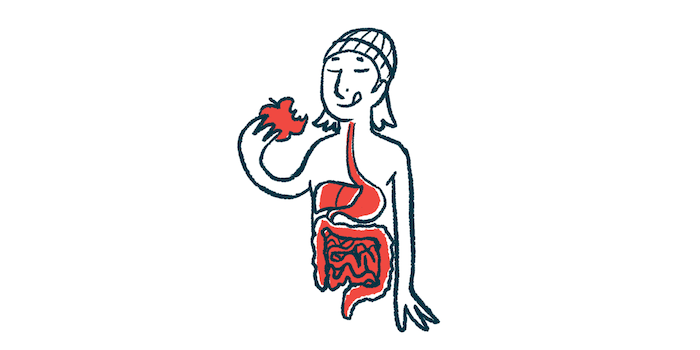Forceful swallowing not seen to ease dysphagia of Parkinson’s
Larger studies needed into effortful swallow maneuver, researchers say

An approach for treating dysphagia — called effortful swallow maneuver — did not consistently ease signs of swallowing difficulties for Parkinson’s disease patients in a small pilot study.
Effortful swallow, or ES, refers to a practice where patients are asked to consciously increase the force they use when swallowing as a way of pushing food and liquids down.
Larger studies are needed to better understand how this approach might help Parkinson’s patients, the researchers wrote.
The study, “Exploring the Efficacy of the Effortful Swallow Maneuver for Improving Swallowing in People with Parkinson Disease – A Pilot Study,” was published in the Archives of Rehabilitation Research and Clinical Translation.
Dysphagia in Parkinson’s patients risks malnutrition, aspiration pneumonia
Dysphagia is common among Parkinson’s patients and such difficulties often do not improve with available disease treatments.
In addition to being disruptive, dysphagia can raise the risk of malnutrition, dehydration, or aspiration pneumonia, an infection in the lungs arising when food or liquids are breathed into the airways instead of being swallowed.
Behavioral (compensatory) changes, such as posture adjustment and diet texture modifications can help. But not all patients adhere well or consistently to these approaches, according to the researchers.
Some studies also suggest that targeting the physiological underpinnings of dysphagia could be of help. This study’s researchers, at institutes in Canada, previously identified two mechanisms of swallowing impairments in Parkinson’s.
One is a prolonged time to laryngeal-vestibule-closure (LVC), the body’s first line of defense against swallowed materials accidentally entering the airways, leading to an increased risk of aspiration.
The other is poorer pharyngeal constriction, a process that normally helps to move food down toward the stomach. It’s impairment can lead to less efficient swallowing, or residual foods that don’t move down the digestive tract properly with swallowing (pharyngeal residue).
Now, the researchers examined the utility of effortful swallow in easing signs of dysphagia in patients. ES is intended to increase pressure on foods and liquids when swallowing, enabling sufficient force for them to move to the digestive tract.
The study’s eight Parkinson’s patients, with a median age of 74, had self-reported swallowing problems and were recruited at an outpatient clinic. All were evaluated for swallowing difficulties and to see how a single round of ES might change the two identified mechanisms of swallowing difficulties.
Patients were asked to practice pushing the tongue hard against the roof of the mouth when swallowing. This was facilitated with a device called an isometric tongue-to-palate press inserted into the mouth, and a pressure-reading instrument to provide patients with feedback about how much pressure they were using.
Consistent, helpful change not seen with effortful swallow in small group studied
In the initial (study start or baseline) evaluation, responses to ES varied, with some patients seeing improvements in aspiration scores and time to LVC closure using effortful swallowing compared with regular swallowing. Others reported no change, and some saw a worsening. Likewise, responses in terms of pharyngeal residue and pharyngeal restriction varied.
Then, five patients who exhibited signs of LVC or pharyngeal dysfunction at baseline underwent a four-week intervention consisting of two, 30-minute ES sessions daily for five days each week. They then were re-evaluated for the long-term rehabilitative potential of effortful swallow.
Again, the intervention did not lead to any consistent benefits in terms of time to LVC and aspiration, or pharyngeal residue and constriction. Overall, however, four of the five patients showed an improvement on at least one parameter.
Beneficial responses or worsening did not systematically depend on whether a person was swallowing a thin or thicker liquid, Parkinson’s severity or duration, or patients’ perceived burden of dysphagia.
The scientists cautioned that the small number of patients in this pilot study and its lack of a control group without the ES intervention make it “challenging to derive conclusions regarding cause and effect relationships and there is a risk of over-interpretation.”
“This study points to the need for much larger sample sizes in order to confidently ascertain group-level benefits of the effortful swallow maneuver reinforced with the use of biofeedback, as a therapeutic resource in the rehabilitation of oropharyngeal dysphagia in people with Parkinson Disease,” the team concluded.







